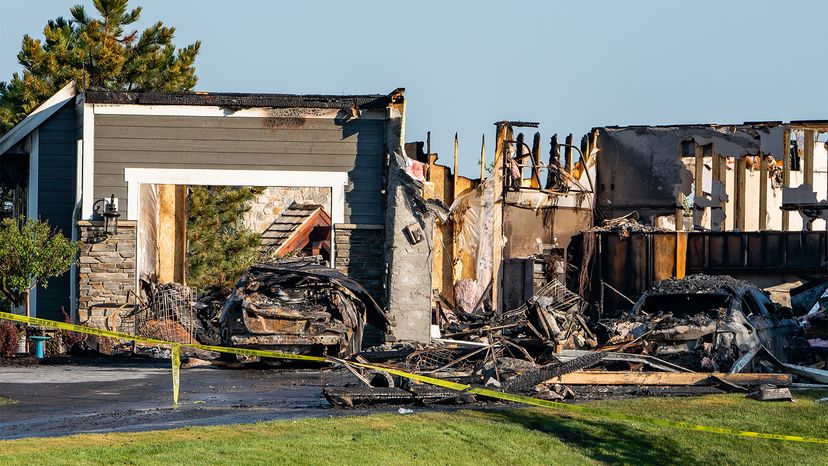
After the storm has cleared or the fire has died down, your sense of relief at surviving may quickly give way to a sense of shock when you gaze at the charred or battered wreckage that used to be your home and all the stuff inside it. If there’s any consolation, it’s that you have a homeowners insurance policy that will help to make you whole again.
But before that can happen, you have to file a homeowners insurance claim. While documenting your personal disaster and the harm that it’s caused you may be emotionally painful, it’s an essential step in getting on with your life. And the process isn’t necessarily that complex or difficult, especially if you’ve had the foresight to prepare for it in advance with a careful inventory of your home and property.
How to Prepare for the Worst-case Scenario
One of the most important steps in filing a claim is something that you need to do in advance of any disaster — to visually document your home and your personal property, so that you can prove to the insurance company what everything is worth."All you need is a smartphone camera," advises Amy Bach, executive director of United Policyholders, a California-based consumer advocacy organization. "Make a video, 10 minutes of narrating about the inside and outside features of your home. Mention things such as ‘here’s my grandmother’s dresser that we inherited.’ Then make sure that you store that file in the cloud or email it to a relative." It’s a good idea to store your policy information in some similarly safe place online as well.
Additionally, it’s a good idea to create a written inventory at the same time, according to Robert Buckel, vice president and product manager at Erie Insurance. "Take the time to list of all your personal possessions, along with their estimated value," he says via email. "If there is fine art or jewelry in the home, get those appraised and keep the appraisal somewhere safe, and fireproof. Letting your agent know of any items you collect of high value beforehand will come in handy in case of a loss. Many insurance policies also limit how much coverage applies to fine art, jewelry and other high value items, so your agent can help you make sure they are properly covered."
It’s important to regularly go over your inventory and make sure that it is up-to-date, according to Angi Orbann, vice president of Property for Personal Insurance at Travelers Insurance, who also suggests that you keep receipts for items, and upload the written inventory into cloud storage as a precaution.
What to Do After Disaster Strikes
Fast-forward to the disaster aftermath. It’s important to contact the claims department of your insurance company as soon as possible after a disaster strikes or a loss occurs, according to Tim Bowen, assistant vice president of home operations at MetLife Auto & Home.
"When contacting the claims department, be ready to provide your policyholder information as well as policy number, if possible," Bowen says. "If not, your claims associate should be able to locate your policy using your personal information. Once the policy is located, the claims associate will capture what happened, provide emergency assistance if necessary, and walk you through the next steps in the claim process based on the type and scope of the loss reported."
Insurance companies are trying to make the claims process easier and quicker. Allstate Insurance, for example, enables policyholders to file a claim online, or else by contacting their agent, according to Jenny Fitzpatrick, product director for Allstate Insurance.
Either way, you’ll eventually need to document the disaster by sending photos and a description of the damage and when it occurred, she explains via email.
Temporary Fixes
Once you’ve filed your claim, a repair vendor can make temporary repairs, such as boarding up windows, while your insurer evaluates your filing, prepares an estimate and explains to you what coverages, deductibles and limits may apply. "Allstate can recommend repair vendors if needed, but homeowners may choose their own, too," Fitzpatrick says.
Meanwhile, your insurer will evaluate your claim and do an on-site inspection to assess the damage.
"Customers should also not get rid of anything until the insurance company inspects the home," explains Buckel. "This will help determine the amount of the loss and how much needs to be replaced. This may also help determine the cause of the loss."
If you’ve paid for replacement-value coverage, Bach notes that it’s a two-stage process. Initially, she says, the claims adjuster will only give the actual cash value — "what you could have sold it for on Craigslist" – and wait until you’ve actually replaced the items to pay the remainder. That ensures that policyholders actually replace the items, instead of just pocketing the insurance payout.
Now That’s Important
When you do your photo or video home inventory, be sure not to leave anything out. "Open closet doors, drawers and remember to photograph the garage contents," recommends Janet Ruiz, director for strategic communication at the Insurance Information Institute.